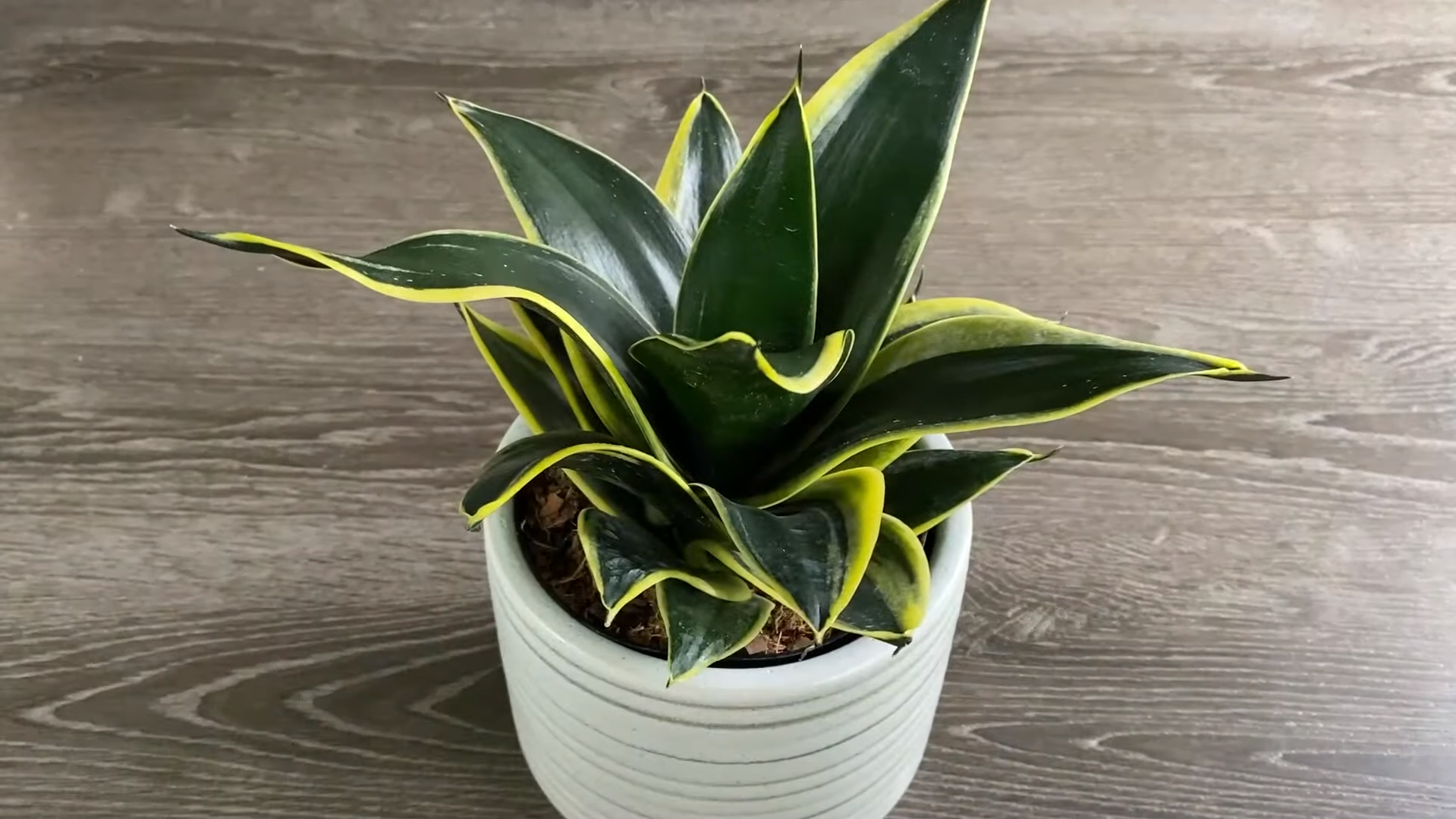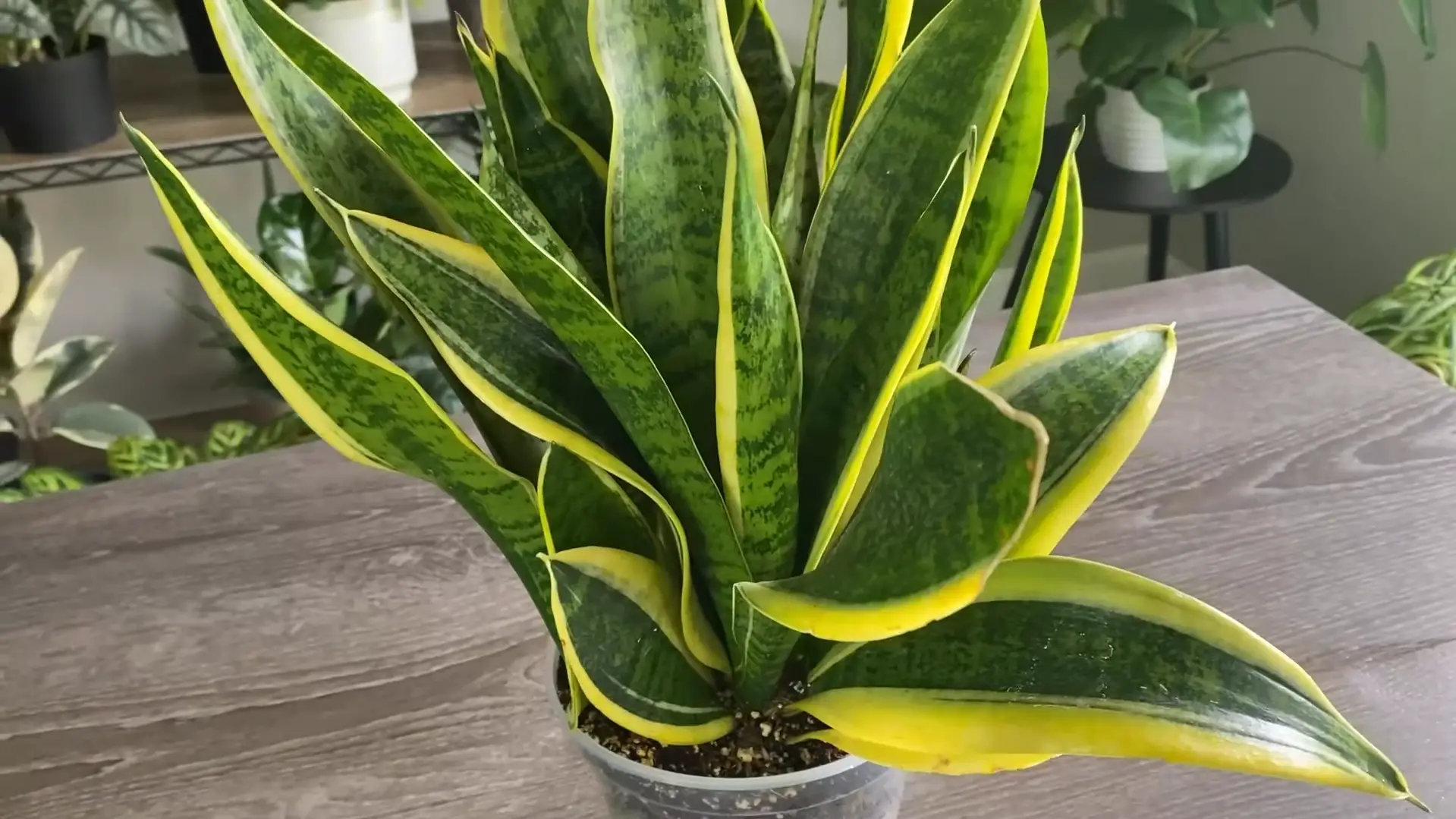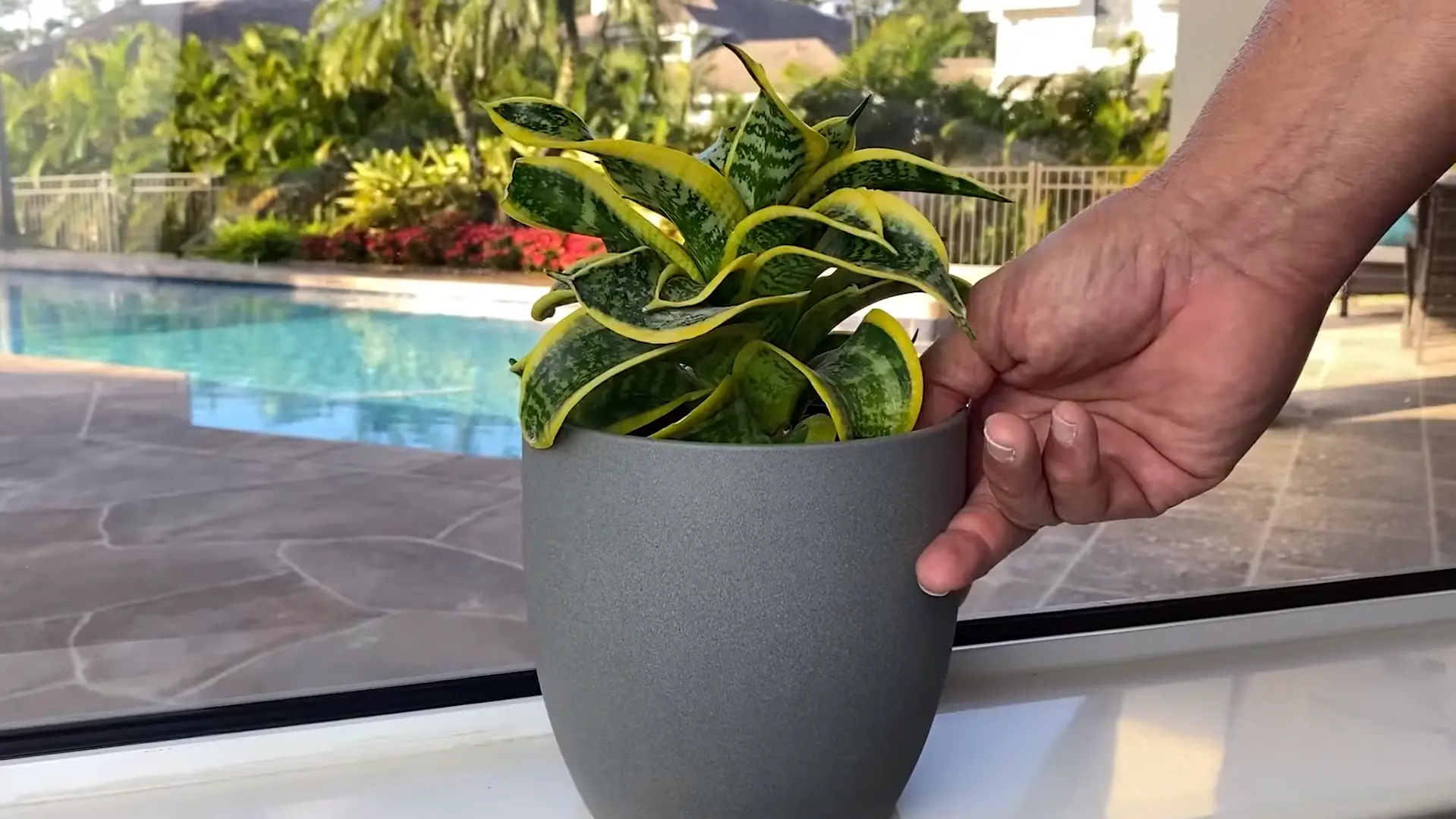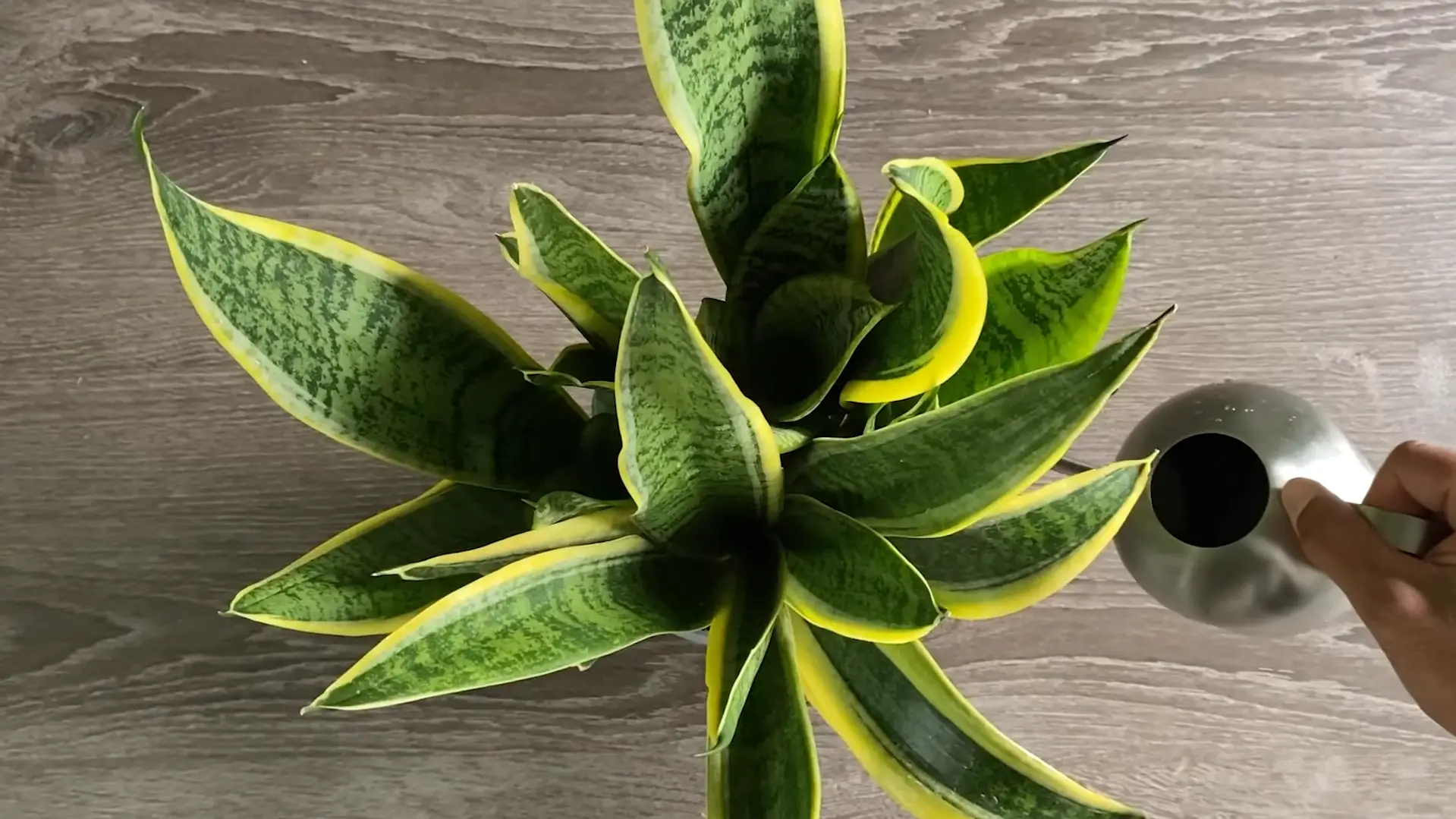Snake plants, also recognized as Mother-in-Law’s Tongue, rank among the most versatile houseplants available. With its thick sword-like leaves and striking yellow edges, this plant looks great in any indoor setting — but did you know that it can be grown outside too? If you’re curious about using snake plants for outdoor landscaping or if you’re looking to give your snake plant a little fresh air now and then, read on to learn more about when to plant these gorgeous specimens outdoors and how best to care for them while keeping them healthy all year long.
Snake Plants
Snake plants, scientifically known as Sansevieria, originate from West Africa, primarily from Nigeria east to the Congo. [1] Named after the Italian prince Raimondo di Sangro, a native of San Severo, they are celebrated for their robustness, ability to endure, and their minimal need for maintenance. The snake plant’s resemblance to the scales of a reptile, coupled with its robust and upright growth, is the origin of its common name. The plant’s unique aesthetics and adaptability to a variety of environmental conditions have endeared it to horticulturists and plant enthusiasts worldwide, making it a common feature in indoor and outdoor landscapes.

Characteristics & Types
Plants are identified by their tall, pointed leaves which are typically green with yellow or white edges. These leaves grow upright, making the plant an excellent choice for compact spaces since it grows vertically rather than spreading outwards. One of the key characteristics of snake plants is their hardiness. They can not only survive but also flourish in low-light environments and are exceptionally drought-tolerant, demanding very little watering.
Additionally, Snake plants are recognized for their air-purifying attributes. According to NASA’s Clean Air Study, Snake plants can remove toxins like formaldehyde, xylene, and toluene from the air, contributing to a healthier indoor environment. [2]
There are several types of snake plants, each with its distinct features. The ‘Sansevieria trifasciata’ is the most common, often recognized by its tall, dark green leaves edged in yellow.
‘Sansevieria hahnii’, also known as Bird’s Nest Snake Plant, is a smaller variety, forming rosettes of leaves that resemble a bird’s nest. ‘Sansevieria zeylanica’ is another popular variety, featuring dark green, slightly wavy leaves which are paler and more silver in color compared to trifasciata.
Popularity of Snake Plants as outdoor decoration
Snake plants have seen a surge in popularity in recent years, especially as exterior decorations. They are often selected for their architectural shape and the visual interest they add to outdoor spaces. Due to their hardiness, they are a common choice for city landscaping, effortlessly adding a touch of greenery to urban environments. They can survive harsh conditions, making them ideal for those who want to beautify their outdoor spaces without requiring a green thumb.
Their ability to improve air quality is another attribute that adds to their appeal, making them a favorite for environmentally conscious decorators. Whether adorning a patio, accentuating a garden or as a centerpiece in a yard, snake plants continue to captivate enthusiasts with their unique aesthetics and easy care.
Considerations Before Planting Snake Plants Outside
Before choosing to plant a snake outside, it’s essential to consider the climate and location. Snake plants thrive best in zones 10-11, requiring warm temperatures for optimal growth. They can endure temperatures as low as 50°F (10°C), but anything colder, especially frost or freezing temperatures, could lead to plant damage or death. [3] Plants prefer indirect sunlight and can suffer leaf burn if exposed to direct, intense sunlight for extended periods. However, they can tolerate shady areas better than most plants.
When considering planting snake plants outdoors, it’s essential to keep in mind that despite their hardiness and low-maintenance nature, they still require some care. Regular checks for pests and diseases, maintaining appropriate watering, and ensuring the plant is protected from extreme weather conditions will help keep your outdoor snake plant healthy and vibrant.
In conclusion, snake plants are known for their slow growth, requiring a degree of patience. However, when provided with the appropriate conditions and care, a snake plant can become a captivating addition to any outdoor landscape, contributing a distinctive aesthetic charm with its vertical growth and architectural structure.
Steps to Successfully Plant Snake Plants Outside
Transplantation Timing
The timing of transplanting is a critical factor in ensuring the successful establishment of plants in an outdoor environment. The best time to plant is typically during the warmer months of spring or early summer. This period provides the plant with ample time to establish its root system before the advent of colder temperatures. Planting snake plants during this time also aligns with their natural growth cycle, facilitating their adaptation to the new environment.
It’s vital to avoid transplanting during the peak of summer heat, as the intense sun and high temperatures can cause undue stress to the plant, inhibiting its ability to establish roots and potentially leading to sunburn. Similarly, transplanting in the colder months of fall or winter is not advisable because the low temperatures and reduced sunlight could hinder the plant’s growth and potentially cause damage or death due to frost.
In essence, carefully choosing the timing of transplantation ensures the snake plant can leverage the optimal growing conditions provided by the warmer months while avoiding the harsh conditions of peak summer and winter. This strategic timing gives the plant the best chance to establish, grow, and eventually thrive in its new outdoor home.
Site Selection
The site you choose for planting your snake plant significantly influences how well it will grow and thrive. The right site can offer the ideal balance of light, temperature, and accessibility for maintenance activities.
Ease of maintenance should also be considered. Choose a site that is easily accessible for regular checks for pests and diseases, watering, and other care activities.

Soil Preparation
Soil serves as the lifeblood of any plant, supplying essential nutrients, water, and air for growth. It also provides physical support, anchoring the plant’s roots and serving as a medium in which they can spread and grow. Therefore, the type of soil used is a significant determinant of a plant’s health and vitality.
When choosing the soil, consider its texture and pH level. The optimal soil for plants should possess a loose and gritty texture to ensure adequate drainage, and it should maintain a slightly acidic to neutral pH level, typically falling within the range of 6.1 to 7.3. You can determine these characteristics with a soil test kit available at garden centers or online.
It’s important to bear in mind that while snake plants are typically low-maintenance, the choice of the right soil can have a substantial impact on their growth and overall health. So, when you prepare to plant your snake plant outdoors, taking the time to choose and prepare the right soil can pay off in the long run, allowing your plant to thrive and beautify your outdoor space for many years.
Growing Technique
Once you’ve determined the perfect planting site with suitable soil, the next step involves the actual planting process. Start by digging a hole that is twice the width of the root ball of your snake plant and equally deep. This provides ample room for the roots to spread out and establish themselves. Place the plant into the hole and make sure it’s standing straight. Fill the hole with the prepared soil, gently pressing it down to remove any air pockets.
For watering, snake plants prefer to dry out between watering sessions, so it’s crucial to avoid overwatering. During the growing season (spring and summer), watering once every 1-2 weeks should suffice. In the dormant winter season, reduce watering to once a month.
Frequently inspect the snake plant for any indications of pests or diseases. Common issues include spider mites and root rot. Spider mites are tiny pests that can be controlled using neem oil sprays or insecticidal soaps. Root rot, often caused by overwatering, can be prevented by ensuring proper watering practices and well-drained soil.
To maintain the aesthetics of your snake plant, remove any yellow or brown leaves. This not only keeps the plant looking vibrant but also allows the plant to direct its energy towards growing new, healthy leaves.

Watering and Mulching
Watering and mulching are integral parts of snake plant care and significantly impact their health and growth.
When it comes to watering, the snake plant is quite hardy and does not require frequent watering. One of the most common mistakes made by snake plant owners is overwatering. Plants thrive when they are allowed to dry out completely between watering sessions. As a general guideline, watering your snake plant approximately once every 2-3 weeks during the summer months and reducing it to once a month or even less frequently during the winter is recommended. Always make sure that the water can drain freely from the soil to prevent water-logging and root rot.
Mulching is a valuable technique that helps in retaining soil moisture and regulating soil temperature. Organic mulch like compost, bark chips, or straw can be spread around the base of the snake plant without touching the stem to prevent rot. The mulch layer should be about 2-3 inches deep. It serves not only to retain moisture but also suppresses weed growth and gradually breaks down to contribute organic matter and nutrients to the soil. However, since plants prefer drier conditions, mulching should be done carefully to avoid creating overly damp conditions around the plant’s base.
Caring for Outdoor Snake Plants
Taking care of snake plants need not be a daunting task. With the right tips and lifehacks, you can ensure your plant thrives with minimum effort. Here are some useful tips for snake plant care:
- Avoid Overwatering: Given their succulent nature, snake plants tend to store water in their leaves. It’s better to be underwater than overwater.
- Use Terracotta Pots: Since snake plants prefer dry conditions, terracotta pots are an excellent choice as they are porous and allow for better evaporation of excess moisture.
- Bright, Indirect Light: While snake plants are tolerant of a range of lighting conditions, they thrive best in bright, indirect light. Steer clear of direct sunlight, as it can lead to leaf burn in snake plants.
- Rotate Your Plant: To ensure your snake plant grows evenly, rotate it regularly. This will ensure all sides receive an equal amount of light.
- Use a Sharp, Clean Tool for Pruning: When removing damaged or old leaves, use a sharp, clean tool to make a clean cut, preventing plant diseases.
- Report When Necessary: Snake plants are slow growers and might not need to be repotted often. But when the roots start to come out of the drainage hole, it’s time for repotting.
- Control Pests Naturally: If you notice pests, use natural solutions like neem oil or dish soap and water mixture to get rid of them.
- Don’t Disturb the Roots: Snake plants don’t like their roots being disturbed. When you report, be gentle and try not to break the root ball too much.
Decorative Ideas for Home and Garden
Snake plants make for an attractive addition to both indoor and outdoor spaces because of their striking vertical growth and architectural feel. Here are a few decorative ideas to take full advantage of these plants’ unique aesthetics:
- Bathroom Accent: Due to their high tolerance for low light and humidity, snake plants make an ideal choice for adding a touch of green to your bathroom. Place a snake plant in a sleek, tall pot to create a modern, spa-like ambiance.
- Outdoor Privacy Screen: Position several snake plants in a row along your patio or balcony. Their tall, linear growth provides a natural privacy screen while adding an element of texture and contrast.
- Centerpiece Plant: Due to their robust structure, snake plants work well as a centerpiece plant in your living room. Place it in a bright, colorful pot to create a stunning contrast with the plant’s dark, lush leaves.
- Workspace Plant: Snake plants can also work great in a home office setup. They not only purify the air but also add a calming touch to your workspace.
- Bedroom Plant: Having a snake plant in your bedroom is not only aesthetically pleasing but also beneficial as they are known to purify the air, making for a healthier sleeping environment.
- Hallway Decoration: If you have a long, narrow hallway, line it with snake plants. Their tall, upright growth adds visual interest and makes the corridor feel less stark.
Frequently Asked Questions
Can you plant snake plants outside in the ground?
Yes, snake plants can be planted outside in the ground. However, they should only be planted outdoors in regions where temperatures do not drop below 50°F (10°C). Snake plants prefer well-drained soil and partial sun to shade. In too much sun, their leaves can turn yellow. In cold weather or frost conditions, it is recommended to take your snake plants indoors as they are not frost-tolerant, and low temperatures can damage the plant. Always remember to check the specific care instructions for your variety of snake plants, as some may have different needs.
Do snake plants do well outside?
Snake plants can thrive outside, provided they are given the right conditions. They are pretty adaptable and can handle a variety of lighting conditions, though they do best in partial shade. These plants prefer drier soil, so they should be planted in an area with good drainage, and should not be overwatered. While they can tolerate a range of temperatures, they are not frost-tolerant, so in regions where temperatures drop below 50°F (10°C), they should be brought indoors. Additionally, snake plants are generally resistant to pests, making them a low-maintenance option for outdoor planting. It’s crucial, however, to remember that care instructions can vary between different varieties of snake plants.
Are snake plants better inside or outside?
Snake plants are highly versatile and can thrive both inside and outside, provided they are given the right care. Indoor snake plants are excellent for air purification and can survive in lower light conditions, making them a great choice for interior decor. Outdoor snake plants, on the other hand, can grow larger and add visual interest to landscape designs. However, they need to be monitored for excess water and extreme temperatures. The choice between inside and outside largely depends on your climate, the amount of care you can provide, and your personal preference.
How do you transplant a snake plant outside?
Transplanting a snake plant outside involves several steps. Start by choosing a location that has partial sun to shade and well-drained soil. Dig a hole that is twice as wide and just as deep as the plant’s root ball. Carefully remove the snake plant from its current pot, preserving as much of the root system as possible. Place the plant in the hole, ensuring the top of the root ball is level with the ground. Backfill the hole with soil, firming it gently around the base of the plant. Water the plant thoroughly and continue to provide adequate water until the plant establishes itself in its new location. Always remember to avoid overwatering and protect the plant from extreme cold.
Useful Video: The Remarkable Guide to Grow Snake Plant Outside
Conclusion
In conclusion, the snake plant is a versatile, resilient, and visually striking addition to any home or garden. These plants not only enhance the aesthetics of a space but also contribute to a healthier environment by purifying the air. Whether placed indoors for a minimalist, modern look or used outdoors for landscaping, the snake plant is truly a worthwhile investment. Be mindful of its care requirements, particularly regarding light, water, and temperature, and this plant will reward you with its robust growth and unique beauty.
References:
- https://www.inaturalist.org/taxa/67710-Sansevieria-trifasciata
- https://www.eltafans.asia/indoor-plants-and-the-nasa-air-quality-study/
- https://gardenforindoor.com/snake-plant-temperature-tolerance/













Leave a Reply
View Comments